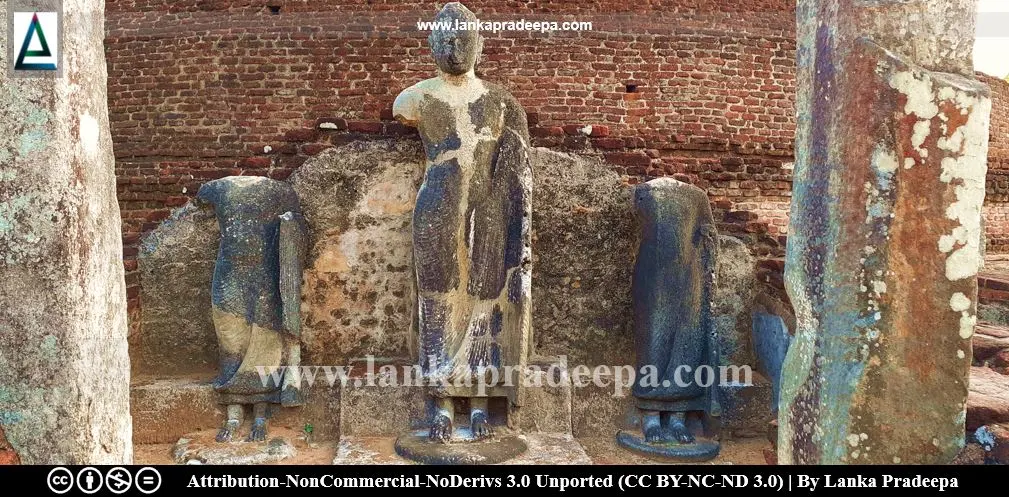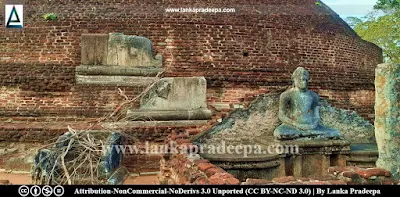
Pabalu Vehera is a ruined Buddhist monastery located in the Ancient City of Polonnaruwa, Sri Lanka. It is located in the south of the main street which starts from the eastern gate.
History
There is no evidence to prove the exact builder or the ancient name of this monastery. However, it is believed that the Pabalu Vehera could be the Stupa which is supposed to have been built by Queen Rupavathi, a consort of King Parakramabahu I [(1153-1186 A.D.) Vanarathana, 1990].
Pabalu Vehera
Presently, this site including the large Stupa is called "Pabalu Vehera" (meaning: the beads Stupa/temple). This name may have been attached to this monastic complex, owing to the discovery of a large number of beads in the vicinity around the Stupa.
Several image houses, each comprising images in different postures, have been built around the Stupa. The image houses vary in size and the largest of them houses an image of a reclining Buddha. At the south of the Stupa is a narrow staircase in three flights providing access to the top of the basal tiers. During the excavations, a round stone and the "Yupa" with melted iron fragments on them had been found by archaeologists (Fernando, 1990).
Pabalu Vehera copper plaque
A stone slab used as a deposit container was found from Pabalu Vehera along with several other objects such as bronzes, reliquaries, a miniature Stupa and beads (Ślączka, 2007). The slab had nine regular square compartments and one of them contained a copper plaque inscribed with a Sanskrit inscription of two lines (Ślączka, 2007).
- Pabalu Vehera Sanskrit Inscription
Period: 9-10th centuries A.D.
Script: Sinhala
Language: Sanskrit
Transcript : (1) Om manipa (2) (dme) sv(o)sti
Translation: Translation is difficult as it contains mysterious words.
.
According to Dhammaratana, this inscription is an invocation address to Tara, a Tantric goddess who was widely worshipped in Sri Lanka during the 9-10 centuries A.D. (Dhammaratana, 2000).




.
References
1) Dhammaratana, I., 2000. Sanskrit Inscriptions in Sri Lanka: A thesis submitted to the University of Pune in partial fulfillment of the requirement for the degree of Doctor of Philosophy in Sanskrit. Department of Sanskrit & Prakrit Languages, University of Pune, India. pp.391-394.2) Fernando, W.B.M., 1990. History of the Department of Archaeology, 1930-1950. Wijesekara, N. (Editor in chief). Archaeological Department centenary (1890-1990): Commemorative series: Volume I: History of the Department of Archaeology. Department of Archaeology (Sri Lanka). p.101.
3) Ślączka, A.A., 2007. Temple consecration rituals in ancient India: text and archaeology (Vol. 26). Brill. pp.382-383.
4) Vanarathana, K., 1990. Sculpture and carvings of Sri Lanka from the 1st to 5th century A.D. Archaeological Department Centenary (1890-1990): Commemorative Series: Vol. IV: Sculpture. p.32.
Location Map
This page was last updated on 12 November 2022


